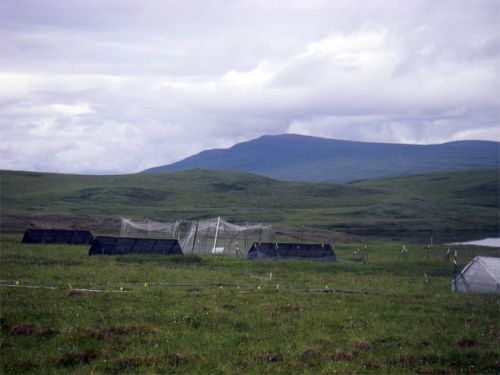Polar Date: July 15, 2008
It’s starting to feel like a scene from Groundhog Day with every morning beginning exactly the same – alarm goes off three times, first one at 7:15, second at 7:30, 3rd at 7:45, then Rebecca my roommate gets up. She is out of the tent in 5 minutes flat. I reluctantly get up, struggle to get my contact lens in without benefit of a mirror, and then finish getting ready. It takes me about 10 minutes to get out of the tent. After that, though, anything can happen!
This day was a day of new faces. The other researchers and their team had arrived the night before. After breakfast, I strolled over to Lab 2 to meet everyone. It felt like I was meeting the new neighbors, with that feeling that you hope everyone is nice and will get along. And it turned out well. Over the next week or so, you’ll be treated to another set of players, Laura Gough and her two grad students, Carol and Donna; John Moore and his grad student, Karl, and Mary, a teacher from Colorado.
 The new crew arrived on July 14 and were already on the tundra the morning of July 15. Laura becomes very animated when talking about tundra, as is apparent by her expression and the reaction of her grad students.
The new crew arrived on July 14 and were already on the tundra the morning of July 15. Laura becomes very animated when talking about tundra, as is apparent by her expression and the reaction of her grad students.
We got to work immediately, with a trip planned out to a part of the tundra that I had not yet visited. It was another moist acidic tundra and to get there we hiked to the end of the boardwalk, headed off across tussock tundra, then across some dry heath tundra, we dipped down to the edge of Toolik Lake, then back up and around until we got to more boardwalks. We hopped up and followed them to the plots.
 Walking past the fertilized greenhouses of the moist acidic tussock, there are more greenhouses that can be reached by boardwalk on by walking across the dry heath tundra. The dry heath tundra is MUCH MUCH easier to walk on than tussock tundra.
Walking past the fertilized greenhouses of the moist acidic tussock, there are more greenhouses that can be reached by boardwalk on by walking across the dry heath tundra. The dry heath tundra is MUCH MUCH easier to walk on than tussock tundra.
Laura explained the process we would use to calculate percent cover and determine species diversity in the plots. These plots are used to measure herbivore effects on vegetation and John Moore measures macro invertebrate diversity and numbers. Each block of plots has control plots and fertilized plots, some are fertilized with just nitrogen, some with nitrogen and phosphorus, some with just phosphorus. We used the 1-meter grids, with Carol and Laura calling out species and numbers and Donna and I recording the data. After a three-hour session, we hiked back to camp.
 Laura is carrying a differently configured 1 meter square grid. This grid has 25 equal squares and is used to survey plots for plant diversity.
Laura is carrying a differently configured 1 meter square grid. This grid has 25 equal squares and is used to survey plots for plant diversity.
The exercise made everyone hungry for the dinner of paella, baked chicken, salad, vegetables and crusty, yummy bread. Dessert (still skipped it!) was a beautiful cake or berry cobbler.
Signing off from Toolik Lake, and remember, "There are no passengers on Spaceship Earth. We are all crew”. ~Marshall McLuhan, 1964

